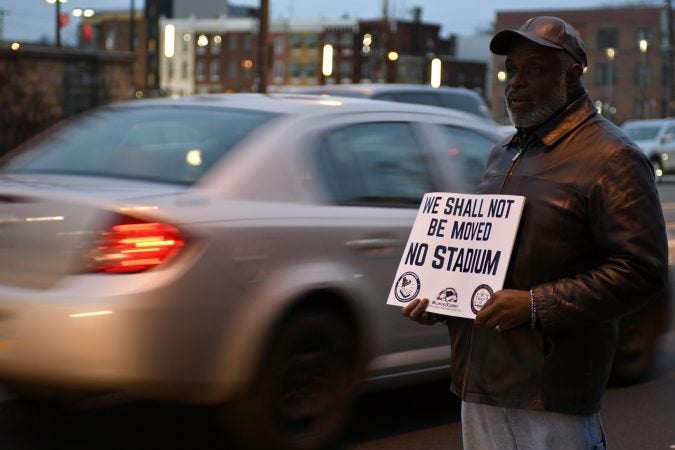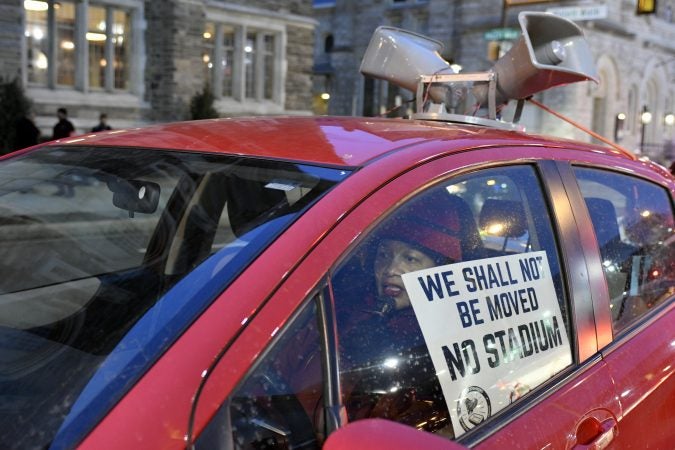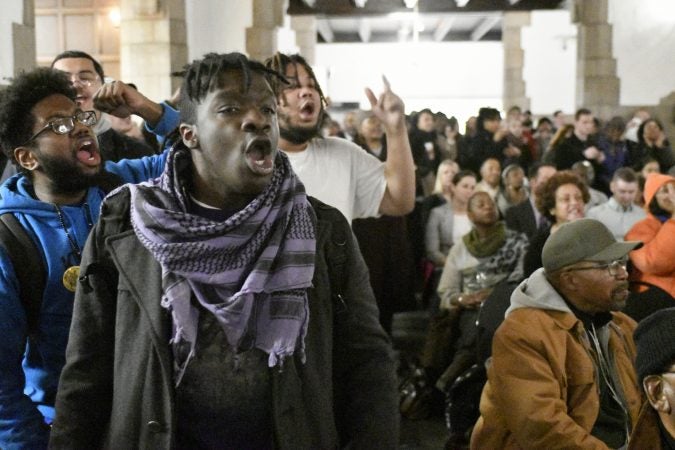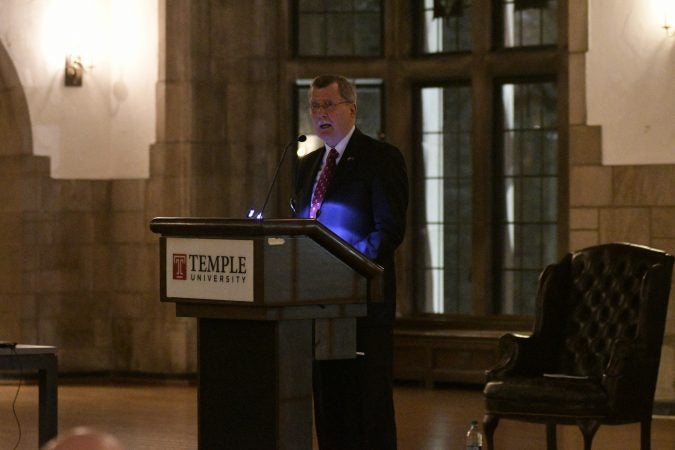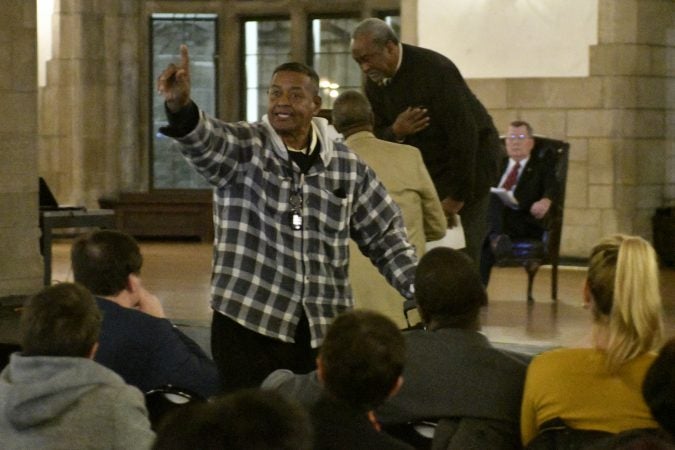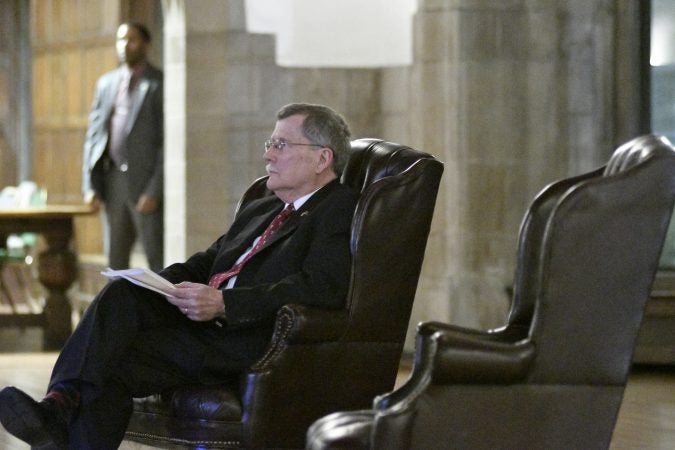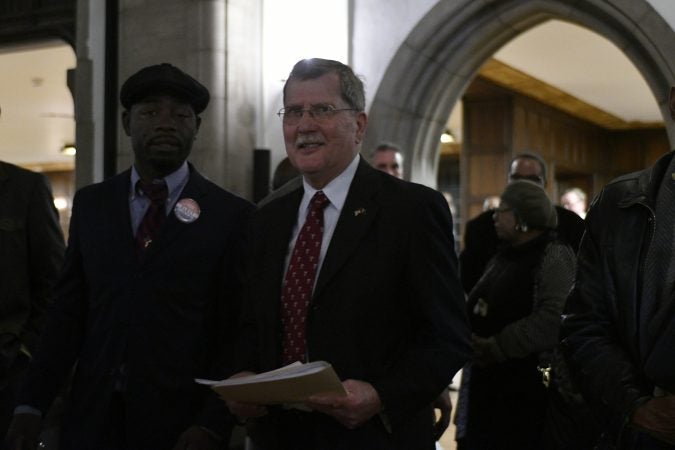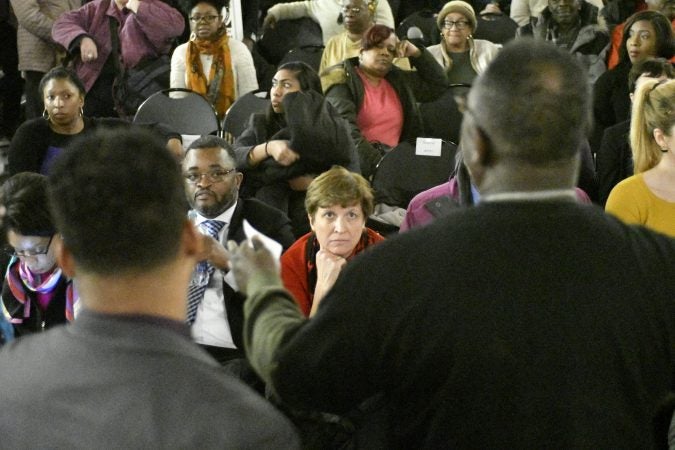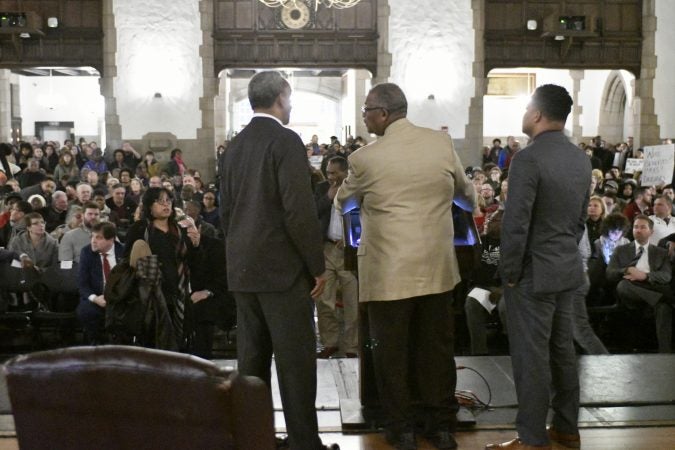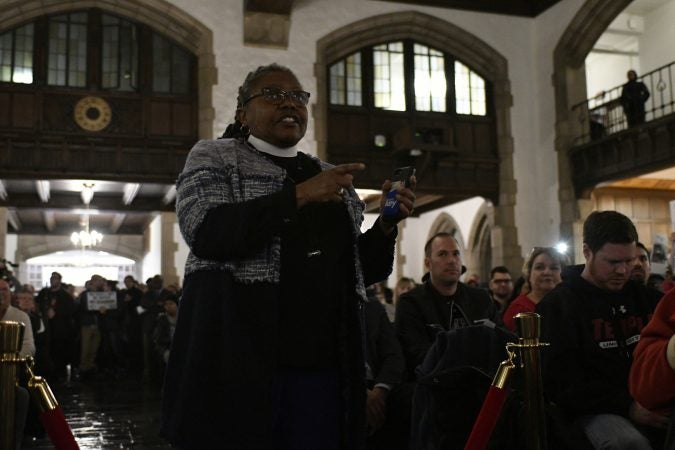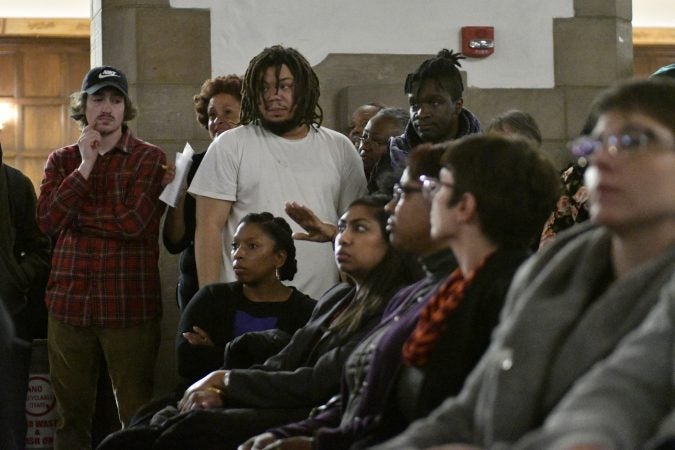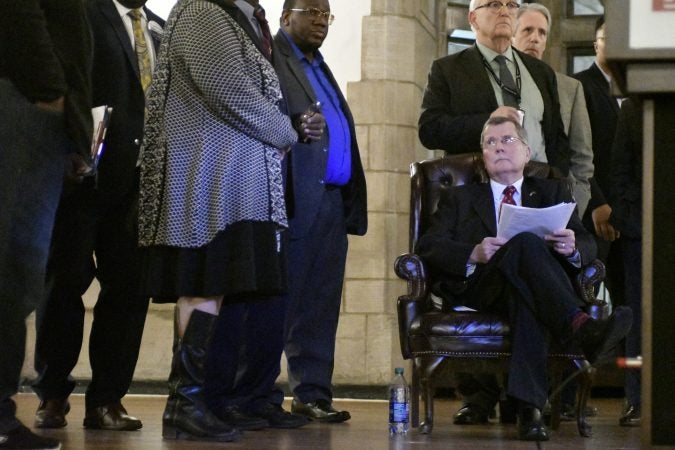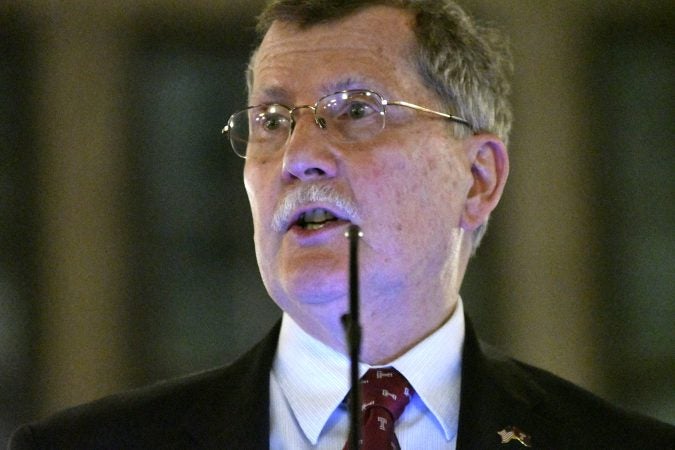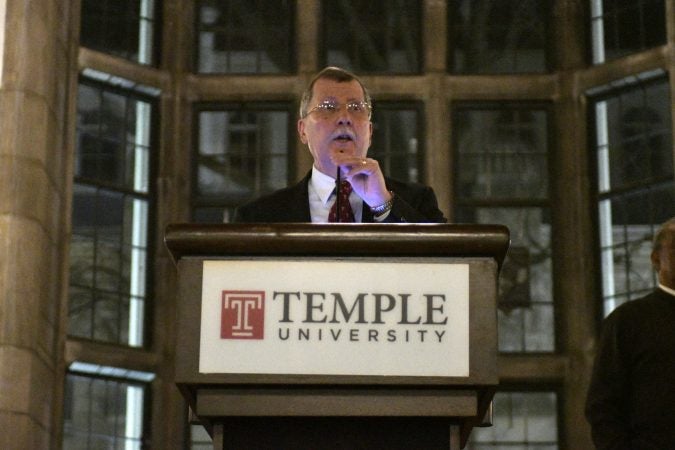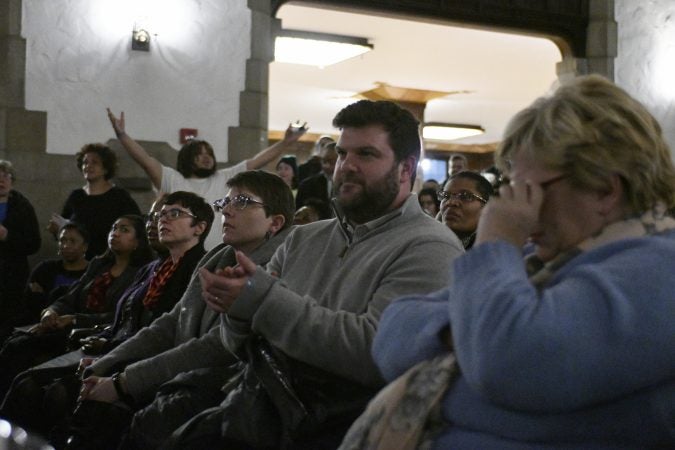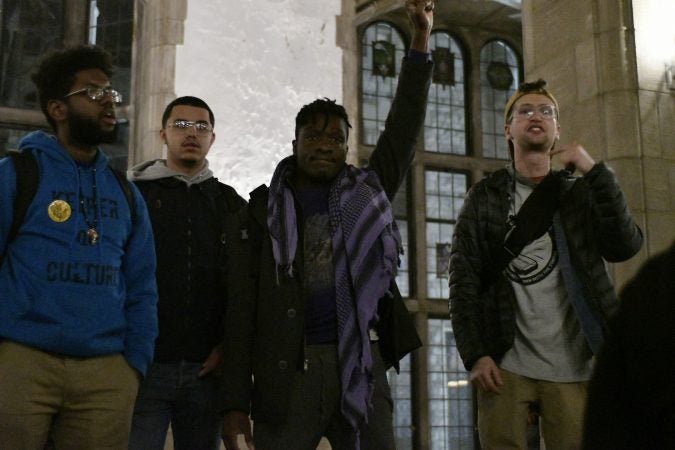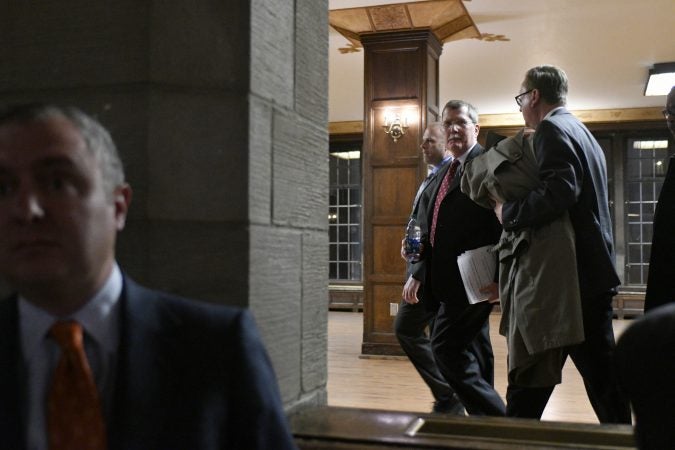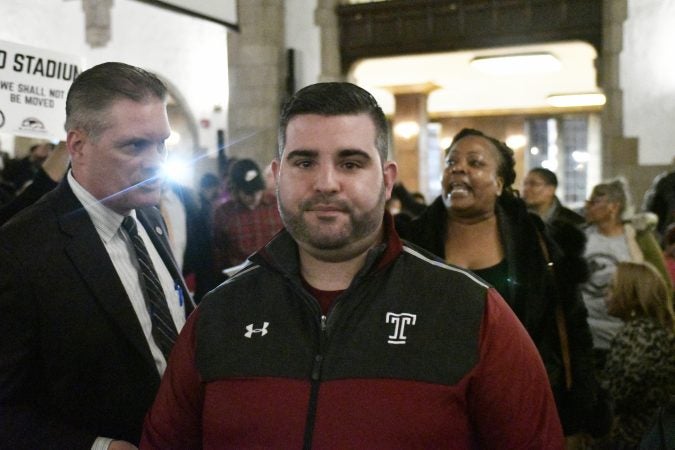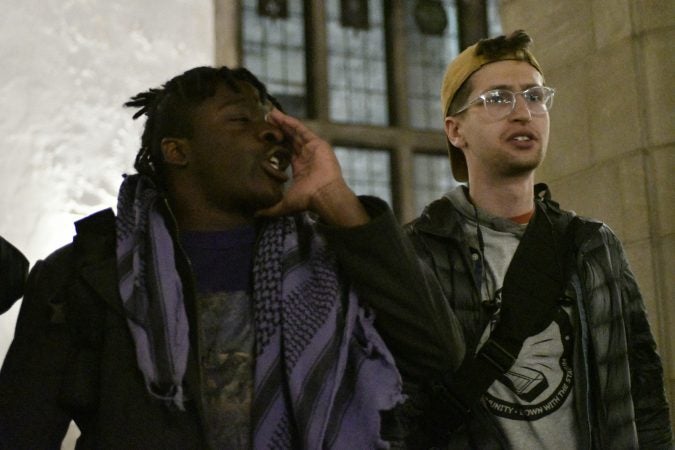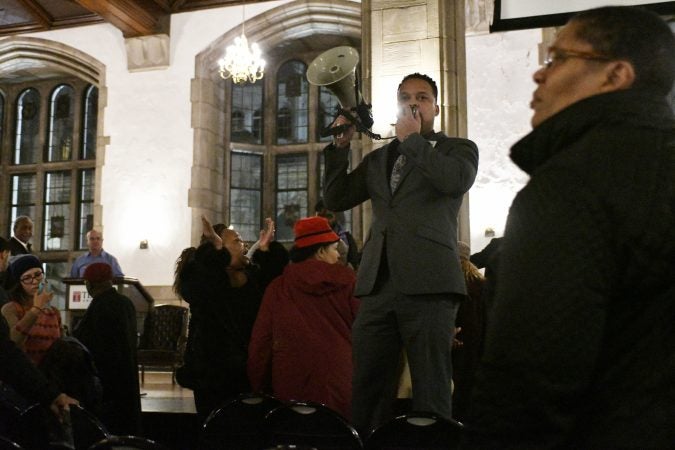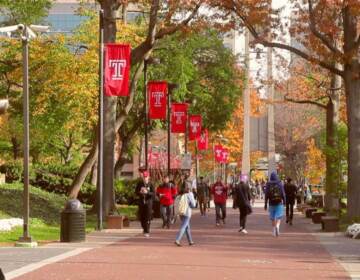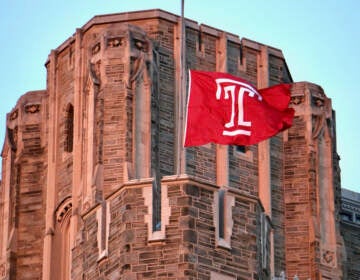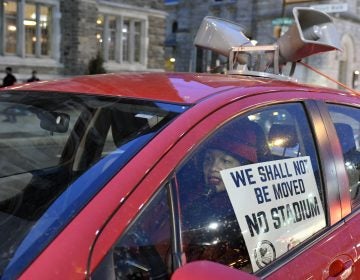Protests cut Temple stadium town hall short
Hundreds of North Philadelphia residents, students and university staff gathered in Mitten Hall to hear Temple President Richard Englert discuss plans for the stadium.
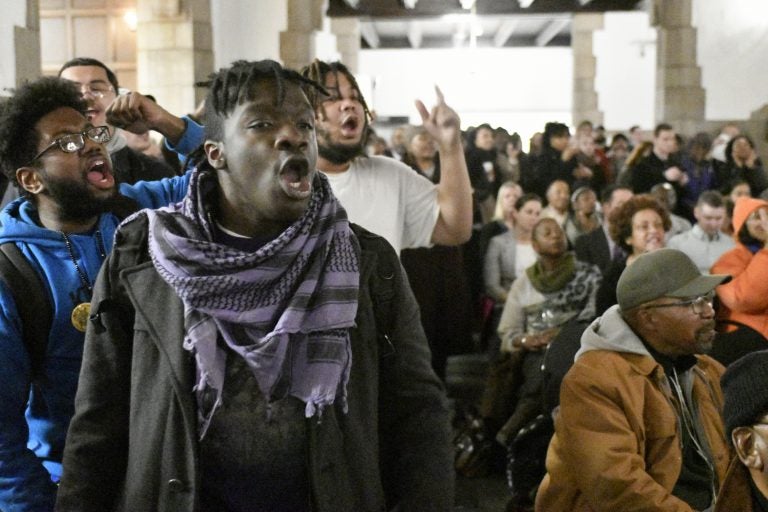
Student Philip Gregory, a Stadium Stompers member, protests during a Tuesday town hall meeting about the proposed $130 million, 30,000-seat stadium on Temple's campus. (Bastiaan Slabbers/for WHYY)
Days after the Stadium Stompers, a North Philadelphia community organization, hosted a town hall in opposition to Temple University’s proposed multi-purpose stadium, the university administration hosted its own.
On Tuesday night, hundreds of North Philadelphia residents, students and university staff gathered in Mitten Hall on North Broad Street to hear Temple President Richard Englert discuss plans for the project.
After Englert’s speech, Dozie Ibeh, the associate vice president of Temple’s Project Delivery Group, which manages the university construction projects, was going to give a presentation, followed by questions from the audience.
But the town hall ended before Englert could finish his speech. It lasted about 45 minutes, but opponents of the project interrupted several times before the administration decided to call it quits for the evening.
Those in the capacity crowd offered mixed opinions on the plan. Many Stadium Stompers and community residents shouted “up with community, down with the stadium” over Englert’s speech. Others pleaded with the protesters to allow him to speak.
In January, discussions heated up after the university announced it would be submitting a stadium proposal to the City of Philadelphia Planning Commission.
Englert, Temple Board of Trustees Chairman Patrick O’Connor and City Council President Darrell Clarke were invited to the Stadium Stompers town hall Thursday, but did not attend.
In his introductory remarks, Englert attempted to explain the reasoning behind Temple’s proposal for a multi-purpose stadium that would be the new home for the football team.
Temple’s rationale
“Building and owning our own facility means substantial savings over leasing the Linc,” Englert said, referring to the Eagles stadium where Temple plays home football games. “This translates into more dollars for investment and other purposes.”
The proposed stadium would cost $130 million. The university pays $1 million a year to rent the Linc, but a new lease could cost $2 million a year plus an up-front payment of $12 million.
In addition to the savings, Englert said construction of the facility and its proposed retail space would create jobs in the community. It would be a “linchpin for a special services district,” which would include a trash pickup twice a week in the North Central Philadelphia neighborhood, rather than the current once a week.
By the time Englert got to the “dispelling rumors” section of his remarks, many started booing. When Englert said that no one would lose their property or homes, several protesters yelled “liar!”
After discussing areas of improvement on the university’s end about community discussion, officials ended the town hall for the evening.
Ray Betzner, a university spokesman, said it was disappointing to see how the meeting unfolded.
“The members of the community have been asking us for an opportunity to get together and hear from the university, and, unfortunately, that couldn’t happen tonight,” Betzner said.
Betzner said there will be continuous dialogue with residents, but would not say if Temple would host another town hall.
Community concerns
Marsha E. Thrower lives in Diamond Park Apartments, a housing facility for older adults and people with disabilities, that’s two blocks from the proposed stadium near 15th and Norris streets. She’s concerned that because 15th Street will close at Norris and reopen at Montgomery Avenue, there will be accessibility issues for residents like her who use a wheelchair.
Thrower uses SEPTA’s CCT Connect, a transit service for people with disabilities, to get to her volunteer job at Liberty Resources, a home health care service in Center City. She thinks the increased traffic and cut off of 15th Street will make her commute difficult.
“A lot of us ride paratransit to get to work, that’s not going to work out,” Thrower said. “If it’s a dead end, how do I get to church or wherever I have to go?”
Thrower, who has lived in Diamond Park since 2011, said she felt like nothing was accomplished Tuesday night and that it was “pretty much a waste of time.” She had a few questions she wanted to ask.
“When they said, no one is going to be affected in their present living space, I don’t understand how,” Thrower said. “I wanted to ask how it will not affect us?”
Thrower added that she hadn’t heard of anyone from the university administration visiting Diamond Park. She also said she didn’t find out about the stadium project until November.
During Englert’s speech, Gail Loney, a block captain on the 2200 block of North Lambert Street, attempted to calm the protesters.
“We came here to listen to what he had to say,” said Loney, who is a Stadium Stompers member. “We knew a lot of the things he was going to say, but I still wanted to hear him.”
One of the community concerns is the future of the Amos Recreation Center, which is directly next to the stadium’s proposed site. Englert, who said the university is prepared to make a “substantial investment” in Amos, said the center will not be hurt by the stadium.
“Why did you have to do this in order to support or put money into Amos?” said Loney, 57. “You could have been putting money into Amos the whole time. I grew up around here going to Amos. It looks about the same way it did when I was going.”
Loney added the university should reconsider the way it talks with the community.
“You can’t just tell people, ‘You got to sit here and listen to me for 45 minutes before you get to talk,’ ” Loney said. “They’re already mad.”
WHYY is your source for fact-based, in-depth journalism and information. As a nonprofit organization, we rely on financial support from readers like you. Please give today.


